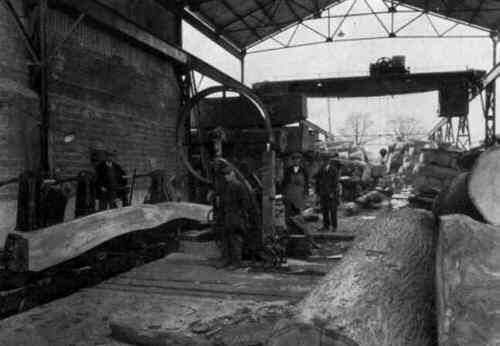
The Bandmill in 1930
|
At about two thirds of its length, a canopy over the gantry gave
some protection to the bandmill crew beneath.
|
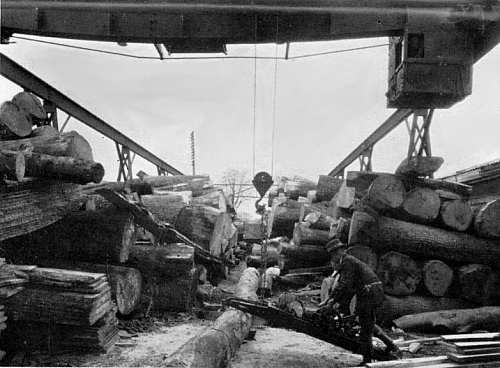
|
Wood waste was burned in a boiler, using water from an underground
spring, to power a Steam Engine. Belts from the Engine's fourteen
foot diameter flywheel turned a shaft, under floorboards, beneath
the gantry.
Further belts connected to this to run the Bandmill,
several other saws and a generator. This produced all the
electricity used by the two overhead gantry cranes, and around the
Sawmill.
|

The Sawdoctor's Shop in 1930
|
Cross cutting logs under the railway end of the Gantry.
The single blade crosscut saw was driven by a single
cylinder petrol engine. It was known as 'Popping Lizzie'.
The exhaust steam was piped to the Bending Shop to heat and soften
the wooden stakes prior to them being bent. It was also distributed
to a row of drying rooms where timber was stacked over the hot
pipes.
|

|
As the planks of wood were cut on the Bandmill, they were put onto
trucks which were pushed along railway lines that ran out to and
across the storage field. The planks were unloaded by hand and built
into stacks. Thin strips of wood between each board allowed the air
to circulate as it was left to season.
In the 1950's, four brick kilns were built to dry the timber further,
so it would remain stable in the warmer centrally heated homes. Two
larger aluminium kilns were added in the early 1970's, doubling the
capacity.
|

The Sawmill work force in the 1960's
|
Concrete roadways and a mobile crane have greatly reduced the
amount manual labour required at the Sawmill.
|
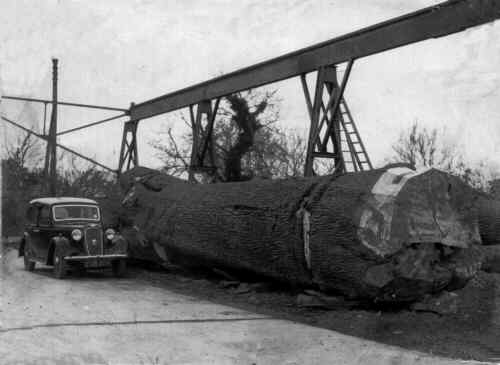
|
This cedar tree contained 700 cubic feet of timber. Both overhead cranes were needed
to lift it from the lorry. Though the butt end was shattered, the rest was cut into ¾ inch
planks for making blanket boxes. The aroma of the timber kept the moths away. 1953.
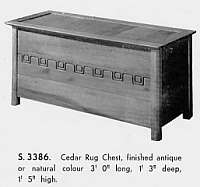
|
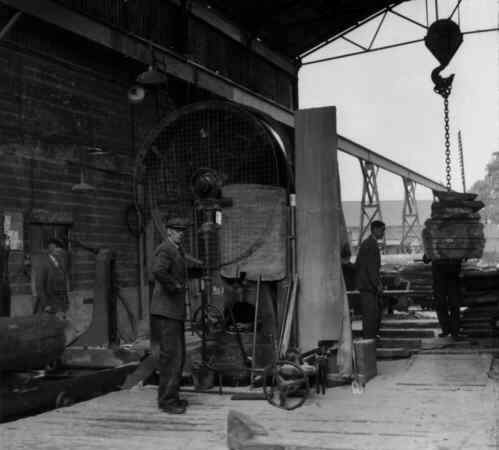
The Bandmill in the 1960's
|
|